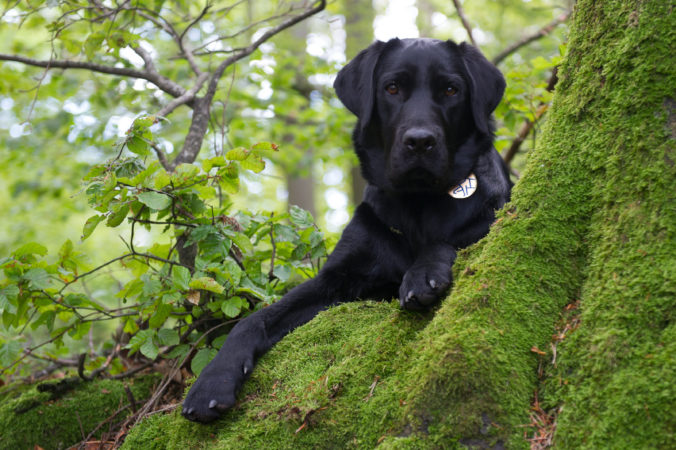
Why does Foundation Swiss School for Guide Dogs for the Blind Allschwil mainly use Labrador Retrievers?
We breed our own Labrador Retrievers. The Labrador is a robust, easy going dog that loves to work. This breed is also extremely friendly towards people and other dogs, and is very adaptable.
However, other breeds and cross-breeds may also be suitable for this work. For us, it's important that he dog with its own talents and unique character is suited to the task, enjoys this particular work.
Are male or female dogs better suited to work as guide dogs, assistance dogs or autism service dogs?
There is no difference in how we train our male and female dogs, or in the work they carry out. Differences are far more apparent between individual dogs and their personalities, and have nothing to do with their gender.
How do you know whether a dog is suitable or not for training as a guide dog, assistance dog or autism service dog?
It takes a few weeks for us to investigate the suitability of any dog. We observe the dog’s talents, skills and character and decide whether it should be trained as a guide dog, an assistance dog or an autism service dog. If it is not suitable for any of these, it will become a family dog; later, it will attend the social dog training course along with its new owner.
Why are the vocal cues given in Italian?
The Italian language is particularly suitable for the 30 or so vocal cues because there are a lot more vowels in Italian than in German. This enables the dog to differentiate more easily between the different vocal cues and the spoken language. In other schools, vocal cues are usually given in the national language.
How long are the daily training sessions?
Depending on the dog’s current training level, a training session may last anything from a few minutes to an hour at a time. In addition to the specific tasks that a guide dog, assistance dog or autism service dog needs to carry out, the instructors also train basic obedience with the dog every day.
Does an instructor train more than one dog at a time?
Instructors train two to three dogs in parallel. They always work individually with each dog, adapting the training periods to suit the requirements and current training level of each particular dog.
How are the dogs housed at the school?
The dogs sleep in groups of two or three per kennel. In addition, the instructors take their dogs home with them in the evenings or over the weekend very often. Because dogs are pack animals, we think it is important that they do not spend too much time alone; they need contact with others dog's and with people. The kennel staff and instructors take the dogs into the free exercise area several times a day; there, they can play with the other dogs in their pack.
What happens to the dogs when they can not work any longer?
Dogs that can not work longer anymore (whether for health reasons or because of their age) are «retired». The choice of where they spend their well-earned retirement is very individual, and together with the guide dog owner we will find the best solution; dogs may stay with their owners, or with somebody in their social environment, or in an appropriate, loving home found for them by the school (further information is available at Retired dogs.
Why does the School for Guide Dogs for the Blind set age restrictions for people who want to keep foster dogs, breeding dogs or family dogs, as well as for any children who live in the same household as the dogs?
People who train and take care of young dogs need a physically and mentally robust basic constitution, as well as a lot of energy and stamina. We are well aware that the state of health of older people can vary a great deal, but our experience over many years has shown the value of imposing a maximum age at registration, not only from the point of view of human welfare but also that of the dog’s wellbeing. This avoids the need for dogs to be re-homed elsewhere, which is upsetting for both parties. In our experience, it is also very difficult to combine raising a young dog with taking care of small children. Ideally therefore, any children living in the same household must be at least five to seven years old.
How are our dogs financed?
The Foundation Swiss School for Guide Dogs for the Blind Allschwil provides its dogs to people who are blind or visually impaired at no charge. This policy was expanded (from 2012) into the more recently-established divisions for assistance and autism service dogs. In addition, the school also pays the costs involved in keeping a dog (e.g. visits to the vet and dog taxes), irrespective of whether the dog is a guide dog, an assistance dog or an autism service dog – as long as the same costs are not covered by third parties, such as the disability or health insurance schemes (further information is available at Financing our dogs).